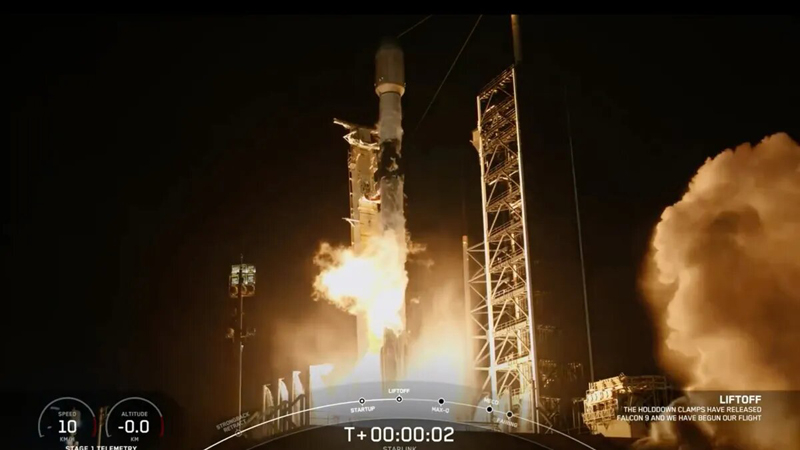SpaceX completed three Falcon 9 rocket launches over the weekend, sending a total of 67 Starlink satellites into orbit. Thus, the company resumed flights after a pause caused by the failure of the second stage of the rocket, which occurred on July 11.

Image source: SpaceX
The Falcon 9’s first launch took place on Saturday at 8:45 a.m. Moscow time from NASA’s Kennedy Space Center in Florida. This was the 17th flight for this first stage of the launch vehicle, this time delivering 23 Starlink satellites into space. They were deployed into low Earth orbit as scheduled, approximately 63 minutes after launch. The Falcon 9’s first stage made a vertical landing on SpaceX’s Just Read the Instructions (JRTI) unmanned maritime platform in the Atlantic Ocean approximately eight minutes after launch.
The next Falcon 9 launch with 23 Starlink satellites was carried out on Sunday at 8:09 Moscow time from the US Space Force station at Cape Canaveral in Florida. This was the 14th launch of this Falcon 9 first stage and the 300th time the booster has been reused by SpaceX overall, the company announced on social media X.
Finally, also on Sunday at 12:22 Moscow time, SpaceX sent the next Falcon 9 rocket into orbit from the Vandenberg Space Force Base in California with 21 Starlink satellites, including 13 with support for Direct to Cell technology, which allows them to connect ordinary smartphones. Both Sunday missions were successful, SpaceX said. The first stages of rockets landed on unmanned sea platforms, and Starlink satellites were successfully deployed into low Earth orbit.
SpaceX also announced the completion of the investigation into the accident, due to which the Falcon 9 failed to launch 20 Starlink satellites into the intended orbit and they burned up in the dense layers of the atmosphere. As previously reported, the accident occurred due to a crack in the measuring line of the pressure sensor connected to the liquid oxygen system, which resulted in its leakage.
During a press conference last Thursday, Sarah Walker, director of flight operations for SpaceX’s Dragon, said the sensor line was installed as a customer request for another mission. The only difference between this component and others commonly used is that it has two compounds rather than one, she said. This may have made it a little more susceptible to vibration, resulting in a small crack.
SpaceX said the failed sensor line is redundant because it is not used by the flight safety system and its functions can be performed by existing sensors on the engine. The company will remove this component from the Falcon 9 second stage engine in the near future.